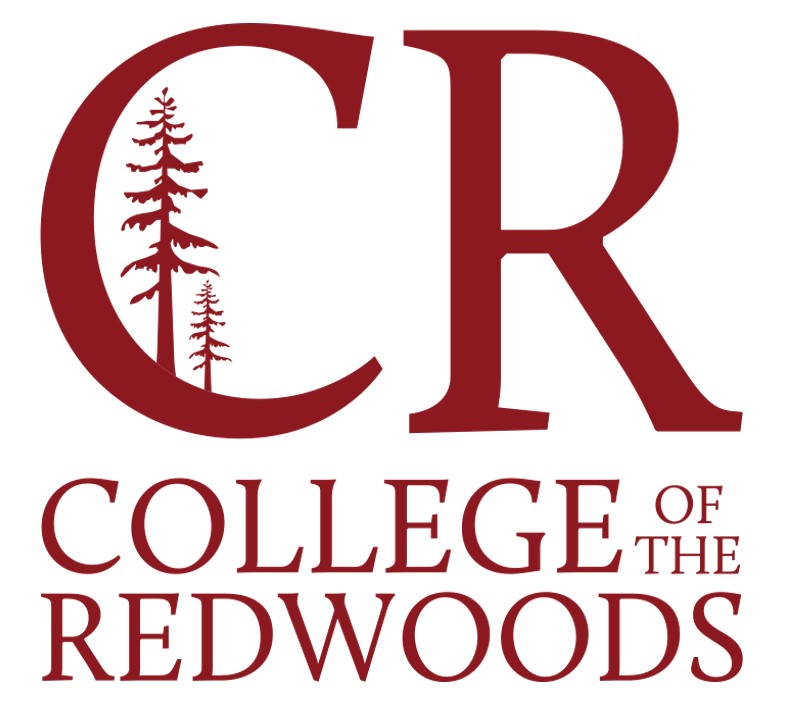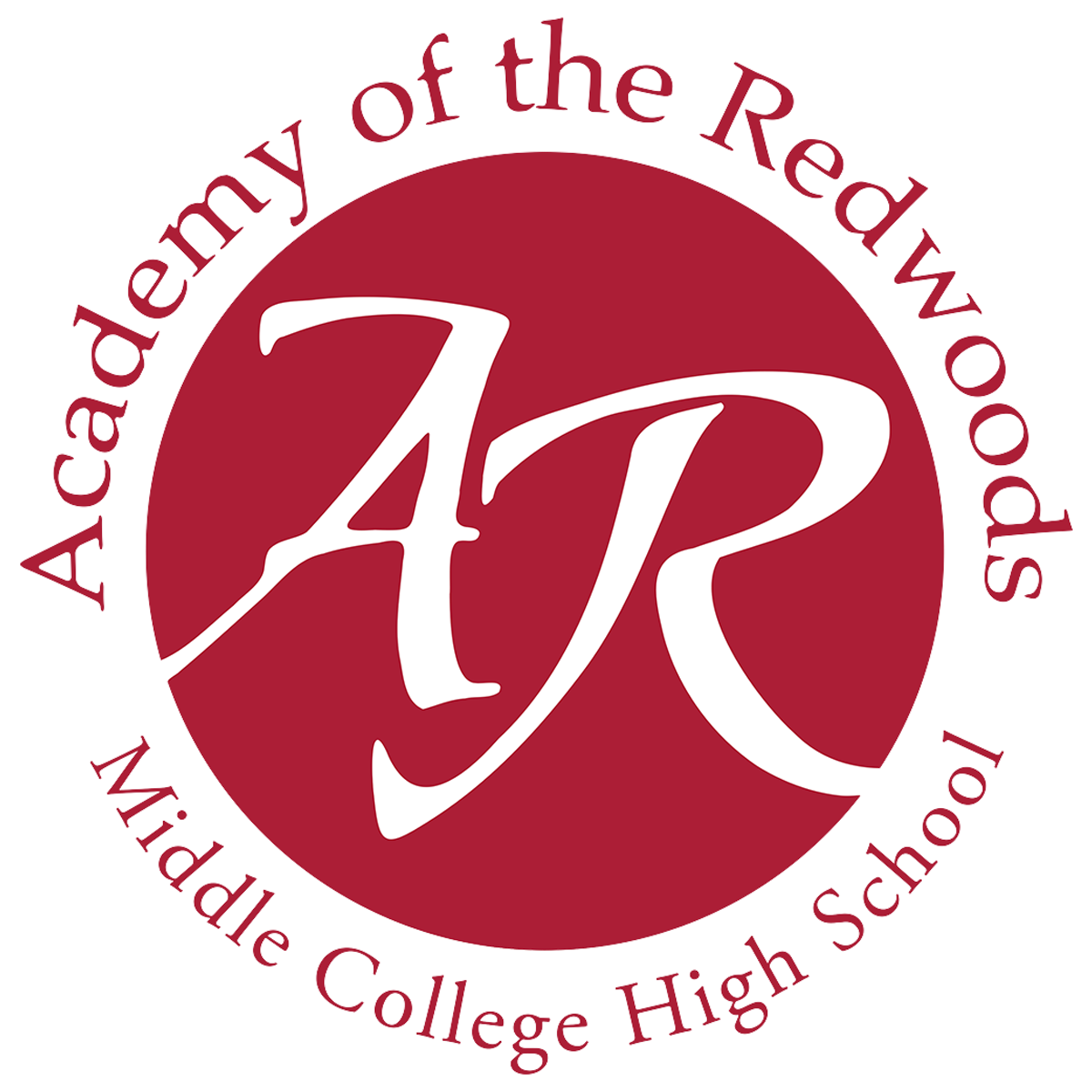COLLEGE REGISTRATION GUIDE


Academy of the Redwoods offers a unique program in partnership with the Fortuna Union High School District and College of the Redwoods (CR). With that opportunity comes a range of expectations, procedures, and responsibilities. This guide is designed to be your go-to reference when questions arise about course registration, graduation requirements, or how AR and CR work together.
At AR, one of our core goals is to help students grow into confident, capable advocates for their own education. While we absolutely welcome questions, we encourage students to use this guide, ask questions during advising appointments, and seek support from mentors and staff in their Tier and Course Support classes.
All of these policies and procedures are also taught during the first-year Foundations class. Every student will meet one-on-one with an advisor before registering for classes, and help is always available but learning how to navigate this process is part of the AR experience.
Steps for Registration at AR and CR
Registering for classes at Academy of the Redwoods—both high school and college—requires thoughtful planning, self-advocacy, and collaboration. These steps are here to guide you through the process:
Step 1: Understand the Guidelines
Start by reading this Registration Guide carefully with your parents or guardian. Make sure you understand AR’s graduation requirements, the Tier system, and the guidelines for taking classes at College of the Redwoods (CR). AR classes must remain your top priority—they provide the foundation for both high school success and future college readiness.
Step 2: Think About Your Goals
Before choosing classes, think about your academic interests, graduation needs, and future goals.
Step 3: Use Your Support System
You are not alone in this process. Talk to the AR Academic Advisor, your Tier teacher or Course Support instructors.
Step 4: Learn How It Works
You’ll be introduced to the CR registration process during your Foundations class in your first year. You’ll also learn how to log in to CR’s system and register for CR classes independently—an important skill you’ll use every semester.
Step 5: Complete Your CR Concurrent Enrollment Form
Each academic year, you must fill out and submit a CR Concurrent Enrollment Form, signed by both you and your parent/guardian. This form is required to take any classes at CR, even if you've taken them before. You’ll turn it into the AR office by the announced deadline.
Step 6: Meet with Your Advisor
Once the AR schedule is released, you’ll meet with an AR advisor to plan your classes for the upcoming semester. These appointments will be announced in the Daily Announcements. Come prepared to discuss your goals, ideas, and proposed CR courses.
Step 7: Register and Confirm
After your advising meeting and submitting your CR form, you’ll register for your CR classes (with support if needed). Be sure to choose classes that fit around your AR schedule and follow all enrollment rules.
Remember: The only way to receive high school credit for a CR course is to check the box on the CR form allowing CR to release your grades to AR.
About AR & Concurrent/Dual Enrollment
Academy of the Redwoods (AR) is an early/middle college high school where students complete a rigorous high school curriculum while also taking college classes at College of the Redwoods (CR). This is called concurrent or dual enrollment, allowing students to earn both high school and college credits at the same time.
Why High School Classes Matter at AR
At Academy of the Redwoods, our high school curriculum is designed to be both rigorous and supportive—for a reason. While concurrent/dual enrollment in college courses is an exciting opportunity, the foundation built in high school classes is what prepares students to succeed at the next level, both academically and personally.
Rigorous high school coursework strengthens essential academic habits and life skills—like time management, organization, persistence, and follow-through—that are critical for success. These classes offer consistent feedback, structured expectations, and gradual challenges that help students build the confidence and discipline they’ll need to manage more independence in life and college coursework.
Equally important, high school classes support students during a critical stage of social and emotional development. Teenagers are still forming their identities, navigating peer relationships, and learning how to advocate for themselves in a safe, developmentally appropriate setting. In AR classrooms, students not only grow intellectually, but also benefit from the social interaction, mentorship, and emotional support that’s essential to becoming a well-rounded young adult.
Finding Balance at AR
At AR, academic success includes overall well-being. To help prevent burnout and support long-term success, students are encouraged to:
Make time for: Relationships, hobbies, rest, and part-time work
Build strong habits using TOES: Time Management, Organization, Engagement, Study Skills
Live our motto: Respect, Responsibility, Choice
Respect: Yourself, others, and our campus
Responsibility: Own your actions and follow through
Choice: Use AR’s freedoms to make wise, intentional decisions
Balance isn’t a luxury—it’s a foundation for success.

Understanding AR: How It Works
This section explains how AR is structured—including our tier system, required high school classes, and what it takes to graduate. Whether you're just starting out or moving up through the tiers, this guide will help explain the academic path ahead.
The Tier System: Structured Independence
AR’s Tier System helps students gradually gain independence.
Tier 1 (1st year): Highly structured, focused on foundational skills
Tier 2A (2nd year): Smaller groups, more independence
Tier 2B (3rd year): Increased autonomy, access to CR classes during Tier
Tier 3 (4th year): Full independence, with proven academic responsibility
To advance through Tiers and qualify for CR courses, students must meet performance, behavior, and attendance requirements.
AR High School Course Sequence
All students must follow this general pathway:
1st Year: English 1, Algebra 1, PE, US/World History, Biology, Foundations
2nd Year: English 2, Geometry, PE, US/World History, Chemistry
3rd Year: English 3, Algebra 2, College & Career, Government/Economics
4th Year: English 4, Senior Seminar
Individual pathways may vary slightly; some requirements may be fulfilled with CR courses, and certain classes may be postponed when necessary.
Graduation Requirements
To graduate from AR, students must:
Earn 240 total credits
Complete a 2-course Language Other Than English (LOTE) sequence through CR
Complete a 3-unit Visual or Performing Arts class through CR
Failure to meet these requirements in a timely manner may result in reassignment to another district site or loss of interdistrict transfer agreement.
Understanding Dual/Concurrent Enrollment
This section explains how dual/concurrent enrollment works, the benefits and risks, what colleges actually want to see on a transcript, how many units to take, and the steps required to earn increased access to CR classes over time.
Benefits of Concurrent Enrollment
Explore college-level coursework
Get a head start on general education
Save time and money on college
Succeeding in this environment requires academic readiness, time management, and
personal responsibility.
What Colleges Are Really Looking For
Contrary to common held beliefs, colleges don’t want to see overloaded transcripts. They value:
Depth over quantity: Explore interests meaningfully
Balance: Emotional maturity and time management
Sustained engagement: Clubs, leadership, volunteering, and work
Fewer, well-chosen college classes—paired with strong grades and involvement—often stand out more than excessive units.
Why Overloading Can Backfire
Taking too many college courses in high school can:
Lead to stress, exhaustion, and burnout
Reduce your flexibility to explore interests later
Result in unit caps affecting your financial aid or major options
College Credit Guidelines
Optimal Range: 14–30 Units
Minimum: 14 units required to graduate from AR
Maximum: 30 units the amount most UCs and CSUs accept while still admitting you as a freshman. If you go beyond that range, you may be better off continuing at CR after graduation and applying to your next college as a transfer student.
Note: Ivy League and private colleges may value CR coursework on transcripts but usually do not award degree credit for it.
CR Enrollment Progression
Students at Academy of the Redwoods may take CR classes when they meet certain academic and readiness requirements based on their year in the program. Every student starting CR classes for the first time must begin with a 3-unit course, except for language courses which are only allowed as first CR classes in 3rd or 4th year.
Students must maintain passing grades in all AR credit/no credit classes every year and follow Tier and behavior guidelines to enroll in CR classes in addition to grade level requirements.
1st-Year Students (Up to 3 units/2nd Semester)
May take CR classes only in the second semester
Must earn straight A’s in the most recent semester and be passing all credit/no credit AR
classes
CR course must come from the approved “bucket list”*
CR class must not conflict with the AR schedule
Advisor approval required
2nd-Year Students (Up to 6 units per semester)
Must earn B’s or better in AR classes and be passing all credit/no credit AR classes
First-time CR students must begin with a 3-unit course from the approved “bucket
list”*
If continuing CR, must have earned B or better in previous CR course(s)
Advisor approval required
3rd-Year Students (Up to 11 units)
Must earn C’s or better in all AR and CR classes and be passing all credit/no credit AR
classes
First-time CR students must begin with a 3-unit course (language exception
allowed)
May take more than 6 units (up to 11) only after successfully completing 6 units and with
advisor approval
4th-Year Students (Up to 11 units)
Must earn C’s or better in all AR and CR classes and be passing all credit/no credit AR classes
First-time CR students must begin with a 3-unit course (language exception allowed)
Progression depends on Tier level and behavior
Advisor approval based on performance, well-being, and academic plan
Note: Students may not drop nor move any academic AR classes to take CR courses.
Additional Notes on Timing and Progression
If students delay their first CR course to second semester of 2nd year, unit limits shift accordingly:
Up to 6 units 1st semester of 3rd year
Up to 11 units 2nd semester of 3rd year
Up to 11 units 1st semester of 4th year
If students take their first CR course 1st semester of 4th year, they may start with a language course up to 4 units, then possibly take up to 11 units second semester with advisor approval.
Examples
Student A takes 3 units in 1st year, 6 units in 2nd year, then up to 11 units in 3rd year.
Student B starts CR in 2nd year second semester with 3 units, then takes 6 units each semester of 3rd year, and up to 11 units in 4th year.
*CR “Bucket List” Courses
These are the only classes approved for a student’s first CR course. Based on our experience, these classes provide a solid introduction to the college environment without overwhelming new students. They are engaging, manageable, and designed to build confidence and skills for future college coursework while allowing students to focus on their rigorous AR coursework.
Visual and Performing Art Classes:
ART 17- Basic Drawing
ART 2- Intro to Art
ART 4- Art Appreciation
ART 35- Digital Photography
MUS 1- Intro to Music and other beginning music classes
DRAMA 24- Intro to Theater
Kinesiology or PE:
KINS 66- Concepts of Physical Fitness and Exercise,
PE classes - weight lifting, dance, self-defense
Astronomy or Communications:
ASTRO 10- Introduction to Astronomy
COMM1000- Introduction to Public Speaking
General Studies:
GS 1 - College Success
College Course Restrictions
● Online courses: Only if no in-person option offered at any semester and needed for graduation
● English:
3rd year: May take English C1000 (B+ in English 2)
4th year: May take English C1000 or C1001 (if C1000 passed)
● Language:
Starts no earlier than 3rd year
3rd year may take a 4-unit language class as their first CR course
● Math:
One CR math class per semester (unless needed to graduate)
● PE:
PE 2 may be replaced with KINS-66 or 3+ CR PE units (after PE 1)
● Gov/Econ:
May be replaced with POLI SCI-10 (requires approval)
Tier-Based CR Enrollment Restrictions
● Tier 1: CR classes must not overlap with AR schedule
● Tier 2A: May use one 85-minute block (not Tier or lunch)
● Tier 2B: May overlap with lunch or Tier (waiver required)
● Tier 3: CR may overlap with Tier/CBIS (requires approval)
Concurrent Enrollment Form Process
● All students must submit a CR Concurrent Enrollment Form yearly
● Signed by both student and parent/guardian
● Submit to AR office by the announced deadline
● Late forms delay registration
● To receive high school credit, you must check the box allowing CR to release grades to AR
Other Notes
Prerequisites: Must be met through coursework or CR challenge form
No third attempts: Students may not attempt a CR course more than twice
No AR schedule changes to fit CR: Work with the academic advisor to adjust Course Supports or Labs, if possible
